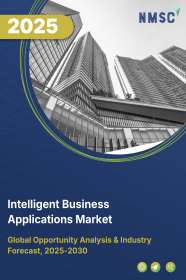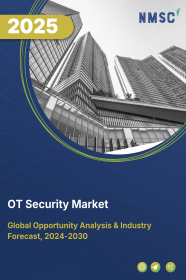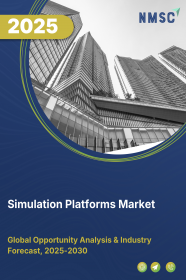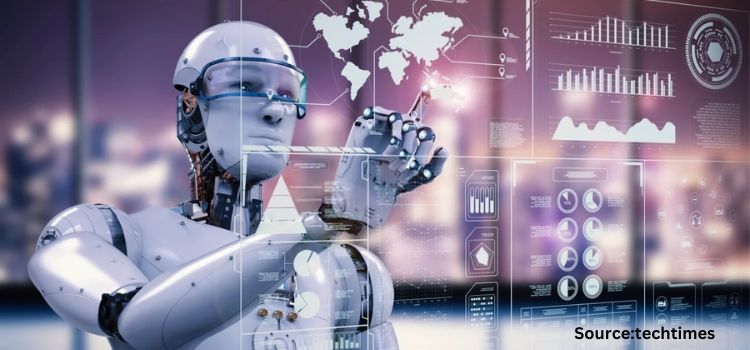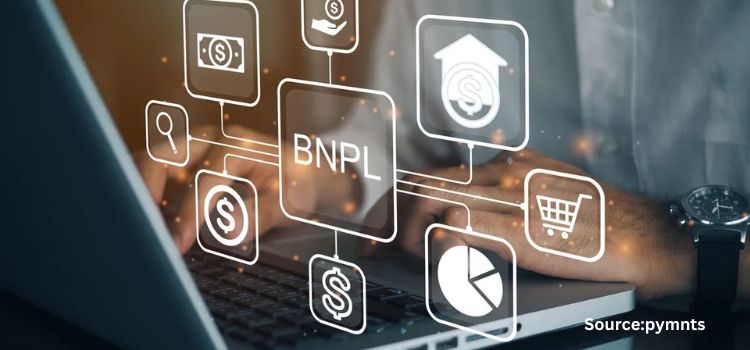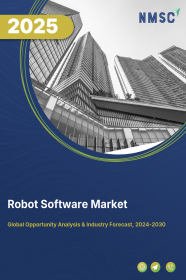
Robot Software Market by Software Type (Recognition Software, Simulation Software, Predictive Maintenance Software, Communication Management Software, and Data Management And Analysis Software), by Robot Type (Service Robots and Industrial Robots), by Deployment Mode (On-premise and On-demand), by Organization Size (Large Enterprises and Small and Medium-sized Enterprises (SMEs)), and Others – Global Opportunity Analysis and Industry Forecast, 2023–2030
Industry: ICT & Media | Publish Date: 14-Feb-2025 | No of Pages: 438 | No. of Tables: 329 | No. of Figures: 301 | Format: PDF | Report Code : IC601
US Tariff Impact on Robot Software Market
Trump Tariffs Are Reshaping Global Business
Market Overview:
The global Robot Software Market size was valued at USD 7.77 billion in 2022, and is expected to reach USD 45.54 billion by 2030, with a CAGR of 23.9% from 2023 to 2030. Robot software refers to the set of programs and algorithms that control and manage the operation of robots or robotic systems. These systems are utilized in a number of industries, such as logistics, manufacturing, entertainment, healthcare, and others.
The functioning of robot software involves several key aspects. For instance, it is responsible for controlling and coordinating the movements and actions of robots. These software programs ensure that the robots perform tasks accurately and efficiently by sending precise commands to the robotic components, such as motors and actuators.
Additionally, robot software plays a vital role in processing data from various sensors equipped in the robots. These sensors, such as cameras, Light Detection and Ranging (LIDAR) sensors, and tactile sensors, provide crucial environmental feedback that enables the robots to perceive and understand their surroundings.
A significant aspect of robot software is its capability to make informed decisions using artificial intelligence (AI) and machine learning (ML) algorithms. Robots can adapt to dynamic and changing conditions by analyzing the data from sensors, applying predefined rules, or learning from past experiences. This intelligence enables them to operate autonomously, making real-time decisions and adjusting their actions accordingly.
Moreover, robot software facilitates communication and networking between robots, enabling collaboration for complex tasks or data sharing with a central control system. In industrial settings, this interconnectedness allows for coordinated operations, leading to improved efficiency and productivity.
Rising Labor Costs and Workforce Challenges Drive the Growth of the Robot Software Market
The labor cost has steadily increased in several regions, such as North America and Europe. This rise poses a financial burden on businesses. According to the International Labour Organization (ILO), the global monthly wages dipped in real terms to -0.9% in the first half of 2022, indicating a challenging economic climate for employers.
Additionally, finding skilled workers for specific tasks can be difficult in certain industries. This, in turn, leads to labor shortages and skill gaps. This situation creates a demand for alternative solutions to mitigate labor-related challenges. Robot software provides an attractive option, offering cost-effective and reliable alternatives to human labor.
Robots equipped with advanced software can work tirelessly and consistently without requiring breaks or benefits, helping businesses maintain their competitiveness in the market. According to the International Federation of Robotics (IFR), the global deployment of industrial robots surpassed three million units in 2022. This significant number of industrial robots in operation highlights the growing importance of automation in industries worldwide.
As labor costs continue to rise in certain regions, businesses face challenges in maintaining profitability and remaining competitive. The increasing adoption of industrial robots is driven by their ability to perform tasks efficiently, accurately, and tirelessly without the limitations associated with human labor. These robots are equipped with advanced robot software and capable of executing repetitive tasks with consistent precision, reducing errors and improving product quality.
The Industry 4.0 and IoT Drive Robot Software Demand Globally
The rise of the Industry 4.0 and smart manufacturing along with the integration of the Internet of Things (IoT) have emerged as significant drivers for the global robot software market. The Industry 4.0 represents the fourth industrial revolution, where digital technologies are seamlessly integrated into manufacturing processes to enhance efficiency, productivity, and automation. According to a report by McKinsey, the adoption of Industry 4.0 technologies is estimated to lead to a potential increase of USD 3.7 trillion in global manufacturing output by 2025.
As manufacturing facilities embrace the Industry 4.0 principles, the demand for advanced automation and robotics has surged. Robot software plays a pivotal role in facilitating the transformation toward smart manufacturing by enabling effective communication and coordination between machines, systems, and production lines. This enhanced connectivity ensures that robots can interact seamlessly with other devices, sensors, and software applications, creating a cohesive and efficient manufacturing ecosystem.
Through the integration of IoT devices, industrial robots can collect and share real-time data, making them more responsive and adaptable to changing production conditions. This capability allows manufacturers to optimize their processes, improve predictive maintenance, and reduce downtime. This, in turn, results in significant cost savings and enhanced production efficiency.
Cybersecurity and Data Protection Concerns Associated with Robot Software Restrains the Growth of the Market
As the adoption of robot software increases, so does the potential risk of cyber threats and data breaches. The growing dependence on interconnected systems and the Internet of Things (IoT) in robotic applications give rise to vulnerabilities that malicious entities could exploit.
Businesses and industries are hesitant to fully embrace robot software without adequate assurance of robust cybersecurity measures. The fear of potential data breaches, unauthorized access, and the compromise of critical robotic systems can hinder the adoption of robotics in various sectors.
Furthermore, industries dealing with sensitive data, such as healthcare and finance, may face regulatory compliance challenges that require stringent data protection measures. To address these concerns, market players active in the robot software market must prioritize the development and implementation of robust cybersecurity solutions. Additionally, regulatory bodies and industry standards are vital in shaping cybersecurity practices and guiding companies to adopt best practices in data protection and risk mitigation.
The Expansion of Robotics-as-a-Service Creates New Opportunities in the Market
Robotics-as-a-Service (RaaS) presents a significant opportunity in the global robot software market. This innovative business model allows companies to access robotic solutions and their associated software on a subscription basis rather than investing in the outright purchase of expensive robotic systems. The RaaS model has gained momentum due to its ability to lower entry barriers and reduce upfront costs. It improved the accessibility of robotic technology for businesses of all sizes.
By adopting the RaaS model, companies can leverage advanced robot software and hardware without incurring large capital expenditures. This subscription-based approach allows businesses to allocate their financial resources more efficiently than before and invest in other critical areas of their operations.
The RaaS model offers several advantages to businesses, especially small and medium-sized enterprises (SMEs) that may need more financial capacity to invest in expensive robotic systems. It enables these companies to deploy robotic solutions without committing to long-term investments and provides them with greater flexibility and scalability as their needs evolve. This approach is especially beneficial for businesses operating in dynamic or uncertain markets, allowing them to adapt quickly to changing demands and technologies.
North America Holds the Dominant Market Share in the Global Robot Software Market
North America has emerged as a prominent player in the global robot software market, encompassing countries such as the U.S., Canada, and Mexico. The region has a strong presence of diverse industries, ranging from pharmaceuticals and food & beverages to automotive. Such presence and the implementation of robot software in these industries led to the growth of the robot software market. These industries have increasingly adopted robotics technology to enhance efficiency and productivity in their operations, further propelling the demand for advanced robot software solutions.
Moreover, North American countries have been witnessing substantial investments in research and development activities to develop cutting-edge robotic technologies. These initiatives have fostered the growth of the robot software market by providing a fertile ground for innovation and technology advancements. This region's rapid adoption of new technologies and the presence of leading robotics companies have fueled a significant market growth.
Major players in the robot software industry, such as IBM, Teradyne, Inc., and Nvidia, have established their headquarters in the U.S. They undertook strategic initiatives such as product launches and acquisitions to widen their market presence across the globe. For instance, in May 2023, Nvidia made significant advancements in the robot software market by introducing updates to its Metropolis platform and enhancing the Isaac AMR robotic software. These updates are specifically designed to meet the changing needs of industrial automation, leading to better productivity, efficiency, and safety in industrial operations than before.
Additionally, North America's influence extends beyond industrial domains, as the region has witnessed a steady rise in the adoption of robot software solutions for military applications. Countries such as the U.S. and Canada have increased their military expenditure, resulting in a higher demand for robots equipped with advanced robot software capabilities. These robots are deployed for tasks such as surveillance, reconnaissance, and explosive ordnance disposal. These tasks significantly enhance military forces' capabilities while minimizing risks to human operators. All of these factors are driving the growth of the robot software market in this region.
Robot software has been used in diverse sectors, such as mining, agriculture, and military, in this region. Thus, this expansion of applications has significantly driven the growth and development of the robot software in North America.
Asia-Pacific is Expected to Show Steady Growth in the Global Robot Software Market
The robot software market in Asia-Pacific is driven by several key factors, with one of the primary drivers being the growing demand for automation in manufacturing. Asia-Pacific boasts the world's largest and most competitive manufacturing industries. These industries increasingly turn to automation solutions to improve efficiency and productivity. Hence, robot software plays a vital role in successfully implementing such automation solutions.
Another significant factor propelling the Asia-Pacific robot software market is the surging adoption of the Industry 4.0. It represents the fourth industrial revolution that utilizes advanced technologies, such as artificial intelligence, robotics, and big data. Asia-Pacific stands as a leader in embracing the Industry 4.0, which, in turn, boosts the demand for sophisticated robot software to support and enhance these technological advancements.
Moreover, governments in the Asia-Pacific region actively support the development and adoption of robotics, offering financial incentives and regulatory backing. This supportive environment created by governments overlays the way for the steady growth of the robot software market in the region.
Furthermore, the region's emphasis on research and development and increased collaborations between industry players and academic institutions contribute significantly to the rising adoption of robot software solutions in Asia-Pacific. As investments in AI research continue to grow, the region is poised to witness further integration of advanced robot software technologies across various industries. Combining these factors, the robot software market in Asia-Pacific is experiencing a surge in demand and expected to continue to thrive in the foreseeable future.
Competitive Landscape
Several market players operating in the robot software industry include ABB LTD., Fanuc Corporation, International Business Machines Corporation, Teradyne Inc, Cloudminds, H2O.AI, Nvidia Corporation, Clearpath Robotics, Brain Corp, and Neurala Inc. These market players are adopting strategies, including product launches across various regions, to maintain their dominance in the robot software market.
For instance, in May 2023, Nvidia launched Isaac AMR powered by their robotic software. It utilizes the powerful AI capabilities of the Nova and Orin platforms of Nvidia. This integration enhances the perception, planning, and decision-making abilities of Isaac AMR.
Moreover, in October 2022, Clearpath Robotics announced the launch of its Outdoor Autonomy Software, providing advanced autonomous capabilities for its unmanned ground vehicles (UGVs) in outdoor environments. This software update equips the UGVs with enhanced perception, planning, and control systems. Furthermore, it enables them to navigate and operate autonomously in challenging outdoor terrains and expand the range of applications for Clearpath Robotics' robotic solutions.
Robot Software Market Key Segments
By Software Type
-
Recognition Software
-
Simulation Software
-
Predictive Maintenance Software
-
Communication Management Software
-
Data Management and Analysis Software
By Robot Type
-
Service Robots
-
Ground
-
Aerial
-
Underwater
-
-
Industrial Robots
-
Traditional Industrial Robots
-
Articulated Robots
-
SCARA Robots
-
Parallel Robots
-
Cartesian Robots
-
Other Robots
-
By Deployment Mode
-
On-premise
-
On-demand
By Organization Size
-
Large Enterprises
-
Small and Medium-sized Enterprises (SMEs)
By Industry Vertical
-
Banking, Financial Services, and Insurance (BFSI)
-
Automotive
-
Retail and eCommerce
-
Aerospace & Defense
-
Healthcare and Life Sciences
-
Transportation and Logistics
-
Manufacturing
-
Telecommunications and IT
-
Academia and Research
-
Media & Entertainment
-
Others
By Region
-
North America
-
The U.S.
-
Canada
-
Mexico
-
-
Europe
-
The U.K.
-
Germany
-
France
-
Spain
-
Italy
-
Netherlands
-
Denmark
-
Finland
-
Norway
-
Sweden
-
Russia
-
Rest of Europe
-
-
Asia-Pacific
-
China
-
Japan
-
India
-
Australia
-
South Korea
-
Thailand
-
Singapore
-
Rest of Asia-Pacific
-
-
Rest of the World (RoW)
-
Latin America
-
Middle East
-
Africa
-
Key Players
-
ABB LTD.
-
Fanuc Corporation
-
International Business Machines Corporation
-
Teradyne Inc
-
Cloudminds
-
H2O.AI
-
Nvidia Corporation
-
Clearpath Robotics
-
Brain Corp
-
Neurala Inc
REPORT SCOPE AND SEGMENTATION:
|
Parameters |
Details |
|
Market Size in 2022 |
USD 7.77 Billion |
|
Revenue Forecast in 2030 |
USD 45.54 Billion |
|
Growth Rate |
CAGR of 23.9% from 2023 to 2030 |
|
Analysis Period |
2023–2030 |
|
Base Year Considered |
2022 |
|
Forecast Period |
2023–2030 |
|
Market Size Estimation |
Billion (USD) |
|
Growth Factors |
Rising labor costs and workforce challenges
Introduction of Industry 4.0 and increasing adoption of IoT in multiple industries |
|
Countries Covered |
28 |
|
Companies Profiled |
10 |
|
Market Share |
Available for 10 companies |
|
Customization Scope |
Free customization (equivalent up to 80 working hours of analysts) after purchase. Addition or alteration to country, regional, and segment scope. |
|
Pricing and Purchase Options |
Avail customized purchase options to meet your exact research needs. |

















 Speak to Our Analyst
Speak to Our Analyst



